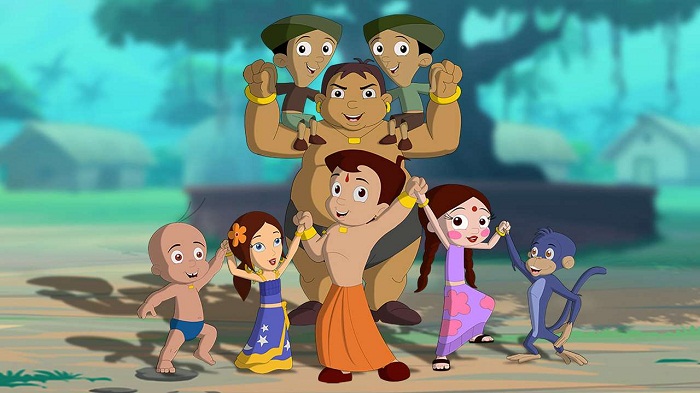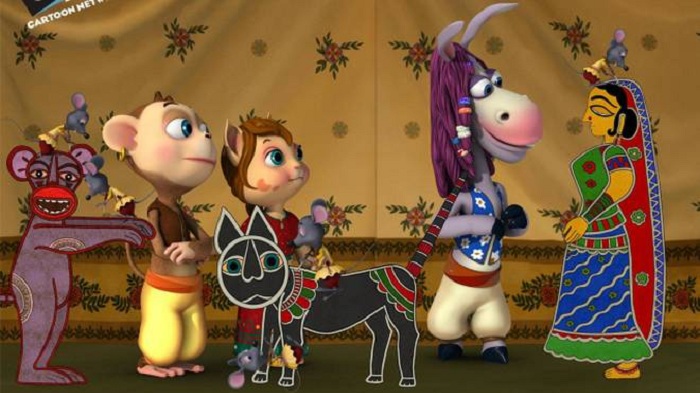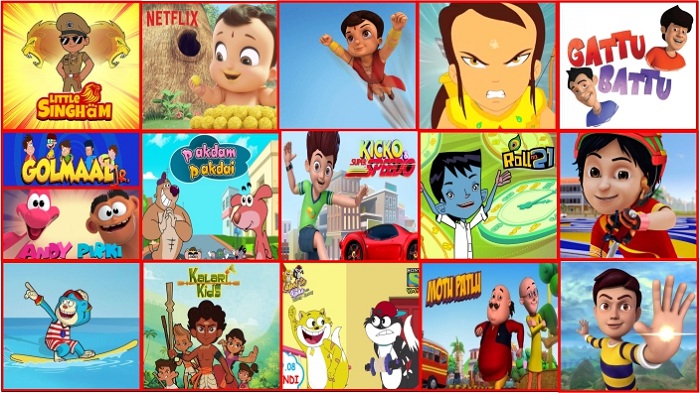Entertainment Intellectual Properties truly define the identity of the Nation and its cultural ethos

While the formula of Indian animation IPs doing well for Indian kids has succeeded greatly, the next logical step for the original Indian animation IP creators is to get opportunities to create the global Indian animation character brands.
One of the most important considerations while communicating with a large section of the nation’s population, especially kids, is to look within while looking forward. The communication patterns that are trusted upon at that tender age play a critical role in shaping their future. In this digital era kids are exposed to all sorts of information from across the globe. Thus, the responsibility of the creative content creators and programming directors is to ensure that a balanced content is fed particularly to this category of audiences.
As efforts are made to develop the future generations into truly global citizens, the understanding of the regional heritage, culture, history and stories is also extremely important.
Animation storytelling in India is skewed towards kids’ genre, hence we have a limitation in many ways. It all started through television as a medium in mid-nineties. Most of the content creators then understood live action creations. India as a dominant live-action country with over 100 years of cinema history took little time to understand the grammar of animation storytelling. However, animation storytelling being a long drawn creation process requires patience, which was hard to find back then as television medium was growing at a rapid speed after liberalisation process was rolled out in early 1990s. Therefore, the global content took a strong position in this segment and the kids in India were found growing up on all sorts of foreign kids’ animation content.
This was followed by an era when foreign animation content was getting dubbed in local Indian languages, which was marked by a growth in viewership as kids gradually started understanding the stories with a little more clarity.
It was almost after a decade that this era ended when few Indian animation creators took a plunge to create original Indian IPs, a step replete with risks. But when the television programming teams decided to air these shows, the viewership went through the roof. It provided the impetus for the kids’ category to grow multi-fold, and the percentage viewership of kids gained a bigger pie in the total viewership universe.
Properties like Hanuman, Little Krishna, Chhota Bheem, Tenalirama, Panchatantra, Shaktimaan, Ghatotkach, and many others proved successful enough to compel the kids’ networks to invest more in original Indian animation shows.

However, at this stage the supporting ecosystem for character licensing, merchandising, brand associations, character events and school contact programs was absent in India. It was against this backdrop that the creators of Chhota Bheem took a bold step to self-distribute the content internationally; create own character licensing and merchandising; forge brand associations; organise character events; open Chhota Bheem stores at airports, events and malls. The creators went on to produce and successfully release a series of theatrical animated feature film in the last six years. Eventually, Chhota Bheem emerged as the biggest animated character brand out of India.
While the original animation IP story was beginning to unfold in India, the co-production of animation IPs also existed in the business modules of several studios. That was another way of partially holding the rights of global original animation IPs. We have many shows produced under the co-productions, but the positioning of Indian studios was way lower in the value-chain as India was initially positioned as the animation production services destination. It sometimes became very difficult for the Indian original animation IP’s / ideas to move up and become the co-productions. It was always the ideas or IPs originating from other countries that were translated into the co- production shows. Nevertheless Indian animation studios did not give up. Some of the global IPs co- produced by the Indian studios include Jungle Book, Peter Pan, Davincibles, Casper, The Little Prince, Animated World Tales amongst many others.

Since 2011-2012, few Indian animation studios focused on co-productions of international animated feature films. However, they have succeeded in setting up world-class 3D character animation pipelines and are delivering international features through co-productions continuously. Some of these theatrical features and DVD shows include Iron Man, Norm Of the North series, The Swan Princes Series, Alpha and Omega, Arctic Dogs, Blinky Bill, Little Nick, Robin Hood, and others.
Post 2014, the India animation entered a new evolution phase as now the networks wanted to move over 60 per cent original Indian animation content to even a new kids’ network.

By now original Indian animation had grown to over 100 animation character brands. While some of these character brands were produced in several seasons, some of them made a great start. IPs like Motu Patlu, Shiva, Little Singham, Krishna, Aryan, Dabang Girls, Krish Trish and Batliboy, Golmaal Jr., My Bhoot Friends, KickO & Super Speedo, Sab Jholmaal Hai, Honey Bunny, Pakdam Pakdai, Rudra, Keymon Ache, Roll No. 21, Super Bheem, Andy Pirki, Oye Golu, Gattu Battu, Mighty Raju, Kalari Kids, Kumbhakaran, Chhoti Anandi, rose as the original Indian animation brands to reckon with.
While all the stakeholders recognise that creating the original Indian animation IPs is the way to go forward, the sole dependency on the television network is making it difficult for a self-sustaining business module to run as the cost of production made available is very low. Although the percentage of kids’ universe is very large in terms of total viewership base, there is a mismatch in terms of advertising revenues. Hence the pressure on production costs doesn’t allow the creators to enhance the quality of the shows. The frustration of the creators can be gauged by the fact that they are delivering higher quality production values in the outsourcing animation services projects while unable to do it for Indian projects though the talent pool remains the same for both.
While the formula of Indian animation IPs doing well for Indian kids has succeeded greatly, the next logical step for the original Indian animation IP creators is to get opportunities to create the global Indian animation character brands. Secondly, the independent animation studios creating original Indian animation must get a chance to retain the IP of the characters and shows, as in the present format they lose all the rights in the first green lighting stage itself.
The new avenues of creation and monetisation of original Indian animation IPs show a lot of promise in the unexplored areas of pre-school animation content and digital platforms for original animation creations. While BARC has included the kids’ content from two years to 14 years now, the advertising and network marketing teams will require a viewership data break up for two to five years, six to 10 years, and 11 to 14 years separately, as the content subject interests are fast changing in kids as they are growing up this age profiles.
Presently, the pre-school category has substantial viewership base but no advertising revenues. Hence, we do not get shows greenlit in pre-school animation. This is a very high potential content creation growth area for the near future.
Secondly, so far we have seen only one big success for an Indian original animation (Might Little Bheem) created for a well known digital platform. The second example of success of the re-run of the original Indian animation content for television, but now placed on a famous international digital content platform dubbed into several languages doing well is Krish, Trish and Baltiboy.

Few steps that will further consolidate promising growth of the original animation IP’s will be as follows:
- Expand the genre from only kids to family entertainment
- Create local co-production and original IP funding mechanism.
- Create and establish a free to air kids public broadcasting networks with focused funding for creation original Indian animation content.
- Establish a co-production and finished content market in India and get buyers for the animation content from all over the world.
- Funding for promotion of Indian original animation content globally through several content markets.
- Create a special animated kids feature film distribution mechanism.
- Pre-school viewership data to be measured and made available to the advertising and kids network, in order to ensure infusion of production funds for pre-school animation programming.

The original Indian animation characters are in a nascent stage and require a right attention as 27 per cent population of India is between 0 to 14 years of age. The highest loyalty for the television network or an animation character brand is displayed by this age profile. More over the kids who were born in India in 90’s and 2000, who grew up watching animation content, will soon become parents. That gives a great opportunity to Indian original animation content creators to widen the animation viewers’ genre from kids to family in next five to 10 years. Hence, the potential to take the original Indian animation creation to the global heights is certain, but needs the right policy intervention and attention right now.
(This article has been contributed by Punnaryug Artvision founder and Screenyug Creations chief mentor Ashish Kulkarni, and AnimationXpress.com doesn’t necessarily subscribe to these views)

